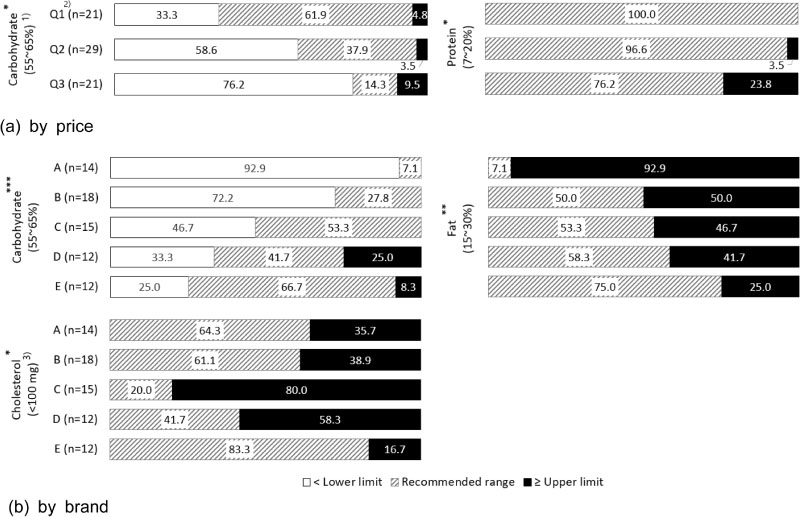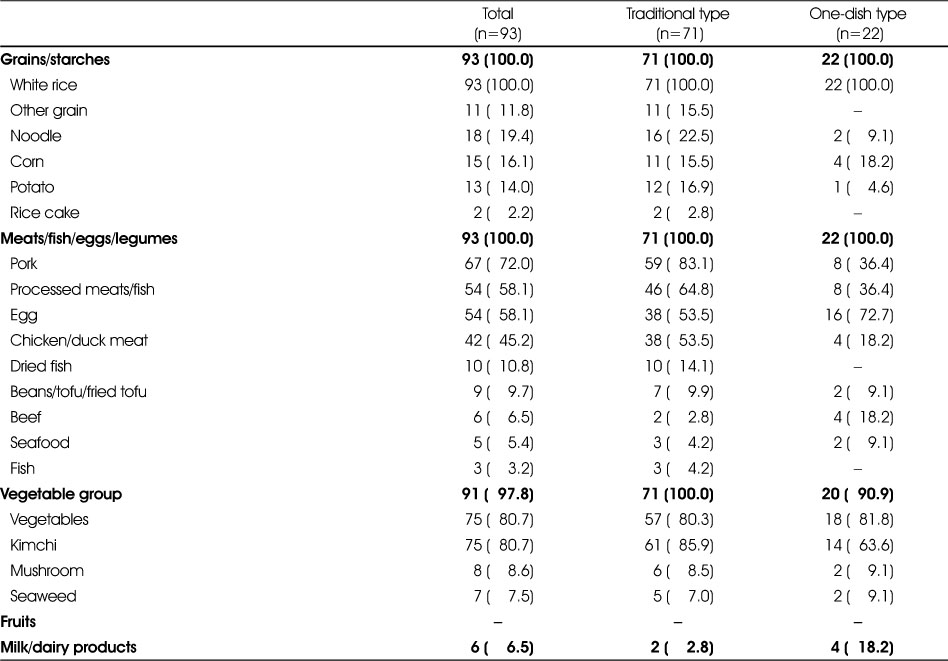Articles
- Page Path
- HOME > Korean J Community Nutr > Volume 25(4); 2020 > Article
- Research Article
- Evaluation of Nutritional Content in Convenience Store Lunchboxes by Meal Type, Price, and Store Brand
- Jin-Seon Park, Young-Hee Han, Taisun Hyun
-
Korean Journal of Community Nutrition 2020;25(4):280-290.
DOI: https://doi.org/10.5720/kjcn.2020.25.4.280
Published online: August 31, 2020
1Graduate student, Major of Food and Nutrition, Chungbuk National University, Cheongju, Korea 
2Invited professor, Department of Food and Nutrition, Chungbuk National University, Cheongju, Korea
3Professor, Department of Food and Nutrition, Chungbuk National University, Cheongju, Korea

2Invited professor, Department of Food and Nutrition, Chungbuk National University, Cheongju, Korea

3Professor, Department of Food and Nutrition, Chungbuk National University, Cheongju, Korea

-
Corresponding author:
Taisun Hyun,
Email: taisun@cbnu.ac.kr
Received: 21 August 2020 • Revised: 24 August 2020 • Accepted: 24 August 2020
- 1,169 Views
- 12 Download
- 3 Crossref
- 0 Scopus
Citations
Citations to this article as recorded by 

- Evaluation of Nutritional Quality of Convenience Store Meal Boxes according to Store Company and Meal Price
Changgyu Cho, Youngmin Nam, Hye-Jong Yoo
Korean Journal of Community Nutrition.2022; 27(2): 105. CrossRef - Factors Influencing Convenience Food Choices based on the Health Consciousness of Chinese Students in South Korea
SongLin Bai, Youngmi Lee, Kyounghee Song, Yujin Lee
Journal of the East Asian Society of Dietary Life.2022; 32(3): 169. CrossRef - Studies of Selection Attributes for Lunch Boxes (Dosirak) Using Conjoint Analysis among Single Men
A Reum Han, Sung Suk Chung, Jeong Ok Rho
Journal of the Korean Society of Food Science and Nutrition.2021; 50(8): 884. CrossRef

 KSCN
KSCN









 Cite
Cite


